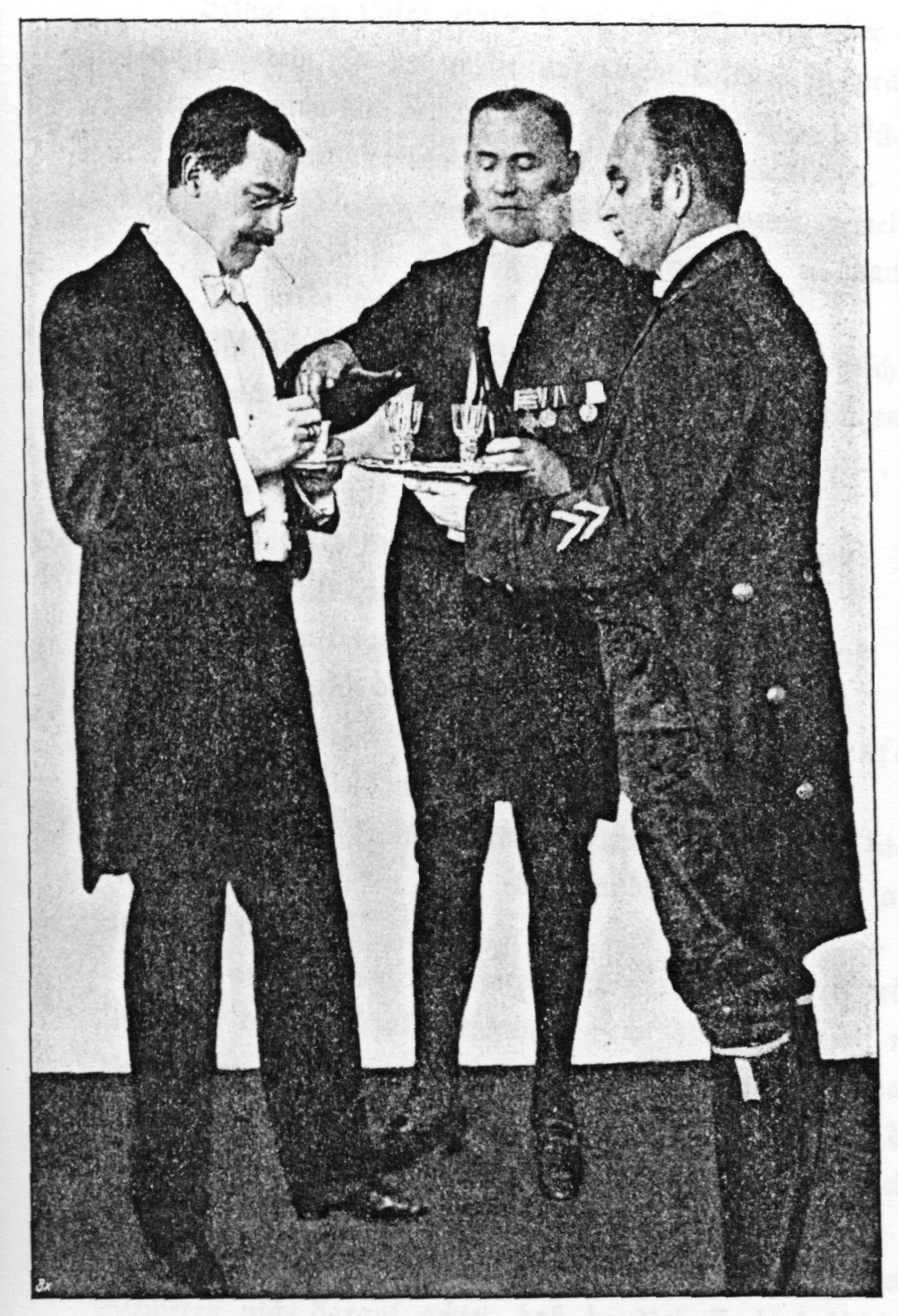|
Le Jeu De L'amour Et Du Hasard
''The Game of Love and Chance'' (french: Le Jeu de l'amour et du hasard) is a three-act romantic comedy by French playwright Marivaux. ''The Game of Love and Chance'' was first performed 23 January 1730 by the Comédie Italienne. In this play, a young woman is visited by her betrothed, whom she does not know. To get a better idea of the type of person he is, she trades places with her servant and disguises herself. However, unbeknownst to her, her fiancé has the same idea and trades places with his valet. The "game" pits the two false servants against the two false masters, and in the end, the couples fall in love with their appropriate counterpart. Like many of Marivaux's other comedies, ''The Game of Love and Chance'' makes use of stock characters from the Commedia dell'arte. In this play, Arlequin is featured. Lisette, who appears in other Marivaux plays, also takes on a stock personality as the feisty servant. Plot summary Silvia is engaged to marry Dorante, a ma ... [...More Info...] [...Related Items...] OR: [Wikipedia] [Google] [Baidu] |
Pierre De Marivaux
Pierre Carlet de Chamblain de Marivaux (4 February 1688 – 12 February 1763), commonly referred to as Marivaux, was a French playwright and novelist. He is considered one of the most important French playwrights of the 18th century, writing numerous comedies for the Comédie-Française and the Comédie-Italienne of Paris. His most important works are '' Le Triomphe de l'amour'', ''Le Jeu de l'amour et du hasard'' and ''Les Fausses Confidences''. He also published a number of essays and two important but unfinished novels, '' La Vie de Marianne'' and ''Le Paysan parvenu''. Life His father was a Norman financier whose name from birth was Carlet, but who assumed the surname of Chamblain, and then that of Marivaux. He brought up his family in Limoges and Riom, in the province of Auvergne, where he directed the mint. Marivaux is said to have written his first play, the ''Père prudent et équitable'', when he was only eighteen, but it was not published until 1712, when he was twenty ... [...More Info...] [...Related Items...] OR: [Wikipedia] [Google] [Baidu] |
Stock Characters
A stock character, also known as a character archetype, is a fictional character in a work of art such as a novel, play, or a film whom audiences recognize from frequent recurrences in a particular literary tradition. There is a wide range of stock characters, covering men and women of various ages, social classes and demeanors. They are archetypal characters distinguished by their simplification and flatness. As a result, they tend to be easy targets for parody and to be criticized as clichés. The presence of a particular array of stock characters is a key component of many genres, and they often help to identify a genre or subgenre. For example, a story with a knight-errant and a witch is probably a fairy tale or fantasy. There are several purposes to using stock characters. Stock characters are a time- and effort-saving shortcut for story creators, as authors can populate their tale with existing well-known character types. Another benefit is that stock characters help to mo ... [...More Info...] [...Related Items...] OR: [Wikipedia] [Google] [Baidu] |
1730 Plays
Year 173 ( CLXXIII) was a common year starting on Thursday (link will display the full calendar) of the Julian calendar. At the time, it was known as the Year of the Consulship of Severus and Pompeianus (or, less frequently, year 926 '' Ab urbe condita''). The denomination 173 for this year has been used since the early medieval period, when the Anno Domini calendar era became the prevalent method in Europe for naming years. Events By place Roman Empire * Gnaeus Claudius Severus and Tiberius Claudius Pompeianus become Roman Consuls. * Given control of the Eastern Empire, Avidius Cassius, the governor of Syria, crushes an insurrection of shepherds known as the Boukoloi. Births * Maximinus Thrax ("the Thracian"), Roman emperor (d. 238) * Mi Heng, Chinese writer and musician (d. 198) Deaths * Donatus of Muenstereifel, Roman soldier and martyr (b. AD 140 Year 140 ( CXL) was a leap year starting on Thursday (link will display the full calendar) of the Julia ... [...More Info...] [...Related Items...] OR: [Wikipedia] [Google] [Baidu] |
Valérie Donzelli
Valérie Donzelli (born 2 March 1973) is a French actress, filmmaker and screenwriter. She has directed five feature films and two short films since 2008, including the film ''Declaration of War'' (2011). Early life Valérie Donzelli was born in Épinal (France). She grew up in Créteil, near Paris. She moved to Lille with her family when she was 14 years old before going back to Paris at the age of 19. Before starting to work in the cinema, Donzelli first studied architecture, but abandoned it quickly. She started playing theatre at the municipal conservatory of the 10th arrondissement of Paris, but always kept a bad memory of this period. For a living, she worked at a bakery in Paris. She met Jérémie Elkaïm at that time, who became her partner, both in life and at work, and who encouraged her to quit the conservatory and her job at the bakery to become an actress. They now have two kids; the oldest one, Gabriel, inspired the movie ''Declaration of War''. They are now sepa ... [...More Info...] [...Related Items...] OR: [Wikipedia] [Google] [Baidu] |
Takarazuka Revue
The is a Japanese all-female musical theatre troupe based in Takarazuka, Hyōgo Prefecture, Japan. Women play all roles in lavish, Broadway-style productions of Western-style musicals and stories adapted from films, novels, manga, and Japanese folktales. The Takarazuka Revue Company is a division of the Hankyu Railway company; all members of the troupe are employed by Hankyu. History The Takarazuka Revue was founded by Ichizō Kobayashi, an industrialist-turned-politician and president of Hankyu Railways, in Takarazuka, Japan in 1913. The city was the terminus of a Hankyu line from Osaka and already a popular tourist destination because of its hot springs. Kobayashi believed that it was the ideal spot to open an attraction of some kind that would boost train ticket sales and draw more business to Takarazuka. Since Western song and dance shows were becoming more popular and Kobayashi considered the kabuki theater to be old and elitist, he decided that an all-female theater ... [...More Info...] [...Related Items...] OR: [Wikipedia] [Google] [Baidu] |
L'Esquive
''Games of Love and Chance'' (french: L'Esquive) is a 2003 French drama film directed by Abdellatif Kechiche and starring Sara Forestier. It won the César Award for Best Film, Best Director, Best Writing and Most Promising Actress. The film was shot in Seine-Saint-Denis in 6 weeks in October and November 2002. Synopsis A group of teenagers from the housing projects of the Paris suburbs practice a passage from the play ''The Game of Love and Chance'' by Marivaux for their French class. Abdelkrim, or Krimo, who initially does not act in the play, falls in love with Lydia. In order to try to seduce her, he accepts the role of Arlequin and joins the rehearsal. But his timidness and awkwardness keeps him from participating in the play as well as succeeding with Lydia. Cast Other than Sara Forestier, many of the actors in this film were inexperienced in cinema and recruited specifically for the film. * Osman Elkharraz as Krimo * Sara Forestier as Lydia * Sabrina Ouazan ... [...More Info...] [...Related Items...] OR: [Wikipedia] [Google] [Baidu] |
Lackey (manservant)
A lackey or lacquey, in its original definition (attested 1529, according to the ''Oxford English Dictionary''), is a uniformed manservant. The modern connotation of "servile follower" appeared later, in 1588 (''OED''). Etymology There are several theories about the origins of the word. By one theory, it is derived from Medieval French ''laquais'', "foot soldier, footman, servant", ultimately from Turkish ''ulak'', literally "a messenger". The word also exists in German, where ''Lakai'' denotes a liveried manservant in the services of a monarch or prince. Usage in popular culture Lackey is typically used as a derogatory term for a servant with little or no self-respect who belittles himself in order to gain an advantage. Such advantage is often assumed to be slight, temporary and often illusory. See also * Sycophancy * Footman A footman is a male domestic worker employed mainly to wait at table or attend a coach or carriage. Etymology Originally in the 14th century a f ... [...More Info...] [...Related Items...] OR: [Wikipedia] [Google] [Baidu] |
Commedia Dell'arte
(; ; ) was an early form of professional theatre, originating from Italian theatre, that was popular throughout Europe between the 16th and 18th centuries. It was formerly called Italian comedy in English and is also known as , , and . Characterized by masked "types", was responsible for the rise of actresses such as Isabella Andreini and improvised performances based on sketches or scenarios. A , such as ''The Tooth Puller'', is both scripted and improvised. Characters' entrances and exits are scripted. A special characteristic of is the , a joke or "something foolish or witty", usually well known to the performers and to some extent a scripted routine. Another characteristic of is pantomime, which is mostly used by the character Arlecchino, now better known as Harlequin. The characters of the usually represent fixed social types and stock characters, such as foolish old men, devious servants, or military officers full of false bravado. The characters are exaggerated " ... [...More Info...] [...Related Items...] OR: [Wikipedia] [Google] [Baidu] |
Harlequin
Harlequin (; it, Arlecchino ; lmo, Arlechin, Bergamasque dialect, Bergamasque pronunciation ) is the best-known of the ''zanni'' or comic servant characters from the Italian language, Italian ''commedia dell'arte'', associated with the city of Bergamo. The role is traditionally believed to have been introduced by Zan Ganassa in the late 16th century, was definitively popularized by the Italian actor Tristano Martinelli in Paris in 1584–1585, and became a stock character after Martinelli's death in 1630. The Harlequin is characterized by his checkered costume. His role is that of a light-hearted, nimble, and Tricky slave, astute servant, often acting to thwart the plans of his master, and pursuing his own love interest, Columbina, with wit and resourcefulness, often competing with the sterner and melancholic Pierrot. He later develops into a prototype of the romantic hero. Harlequin inherits his physical agility and his trickster qualities, as well as his name, from a mischi ... [...More Info...] [...Related Items...] OR: [Wikipedia] [Google] [Baidu] |




